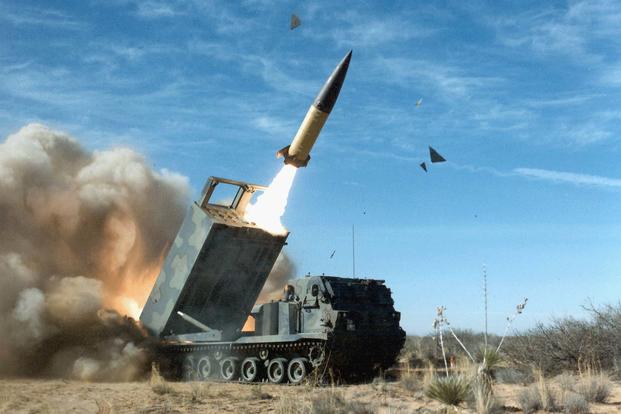Lawmakers from the House and Senate want to know more about what the Pentagon is doing to enhance the U.S. military's long-range artillery to counter potential threats from Russia and China, according to the latest version of the National Defense Authorization Act for fiscal 2020.
"The secretary of Defense shall submit to the committees on Armed Services of the Senate and House of Representatives a report on the efforts by the Army and Marine Corps to develop and deploy ground-based long-range rocket and cannon artillery to counter land and maritime threats," the bill states.
Both Army and Marine Corps leaders have said that long-range precision fires will be critical to success in a major war with any foe as formidable as the U.S. military.
Related: Army Moves Closer to 70-Kilometer Artillery
The bill specifically asks for an assessment of ongoing and future Army and Marine Corps efforts to "develop and deploy ground-based long-range rocket and cannon artillery to counter land and maritime fires in the areas of operations of United States Indo-Pacific Command and United States European Command."
Marine Corps Commandant Gen. David Berger said in his planning guidance that the Corps must develop ground-based capabilities for sea denial and sea control.
"We must possess the ability to turn maritime spaces into barriers so we can attack an adversary's sea lines of communication (SLOC) while defending our own in support of the fleet or joint force," Berger wrote. "This goal requires ground-based [long-range precision fires] with no less than 350 [nautical mile] ranges -- with greater ranges desired."
Earlier this year, the Marine Corps invested roughly $48 million in Raytheon's Naval Strike Missile (NSM) which is armed with a 275-pound, high-explosive warhead and has an operational range of more than 100 nautical miles.
Marine Corps leaders also spoke recently of using the ground-based Army Tactical Missile System, or ATacMS, to engage ships that are roughly 200 miles from shore.
The U.S. Army's senior leaders designated long-range precision fires as the service's No. 1 modernization priority in its sweeping modernization strategy unveiled in 2017.
Artillery experts are working on the Extended Range Cannon Artillery (ERCA) program, which involves fitting M109A8 155mm Paladin self-propelled howitzers with much longer, .58 caliber gun tubes, redesigned chambers and breeches that will be able to withstand gun pressures to get out to 70 kilometers -- a range that doubles the effectiveness of current 155s.
The Army's Precision Strike Missile program is designed to replace the ATACMS and have a range of up to roughly 270 miles or greater, Army officials maintain. Then there is the Strategic Long-Range Cannon program, which conceivably could have a range of up to 1,000 nautical miles, according to Army officials.
If both the House and the Senate approve this version of the NDAA, the long-range artillery report is due to lawmakers by March 1.
The language in the NDAA requires the Pentagon to prepare an analysis, assessment, and determination of how such artillery would be employed and recommendations on how the Defense Department "can improve the development and deployment of such artillery."
-- Matthew Cox can be reached at matthew.cox@military.com.
Read More: Army General Loses Rank After War College Plagiarism Revealed
Don't Miss a Single Military.com Story
To read the full article and get exclusive benefits, sign up today.
It’s FREE
Why am I seeing this? Visit our FAQs













